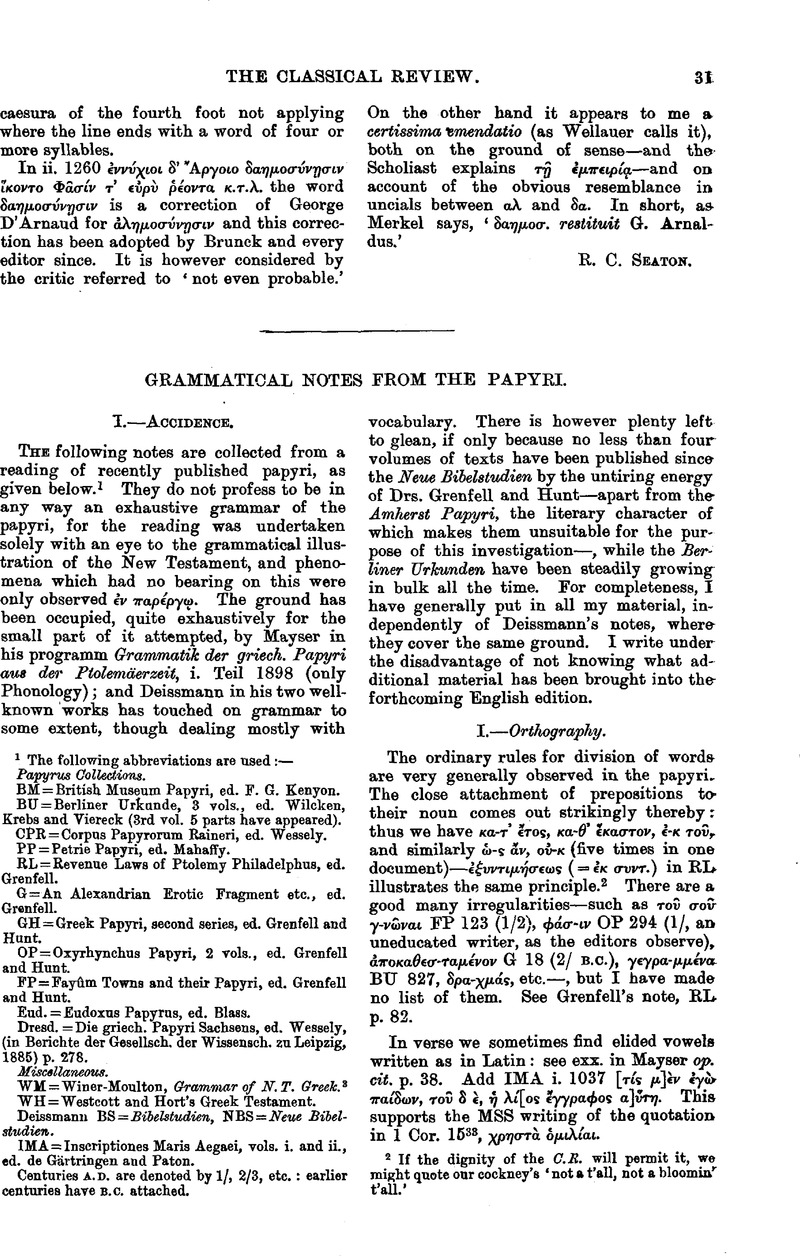No CrossRef data available.
Article contents
Grammatical Notes from the Papyri
Published online by Cambridge University Press: 27 October 2009
Abstract

- Type
- Review Article
- Information
- Copyright
- Copyright © The Classical Association 1901
References
page 31 note 1 The following abbreviations aie used:— Papyrus Collections.
BM = British Museum Papyri, ed. F. G. Kenyon.
BU = Berliner Urkunde, 3 vols., ed. Wilcken, Krebs and Viereck (3rd vol. 5 parts have appeared).
CPR = Corpus Papyrorum Raineri, ed. Wessely.
PP = Petrie Papyri, ed. Mahaffy.
RL = Revenue Laws of Ptolemy Philadelphus, ed. Grenfell.
G = An Alexandrian Erotic Fragment etc., ed. Grenfell.
GH = Greek Papyri, second series, ed. Grenfell and Hunt.
OP = Oxyrhynchus Papyri, 2 vols., ed. Grenfell and Hunt.
FP = Fayûm Towns and their Papyri, ed. Grenfell and Hunt.
Eud. = Eudoxus Papyrus, ed. Blass.
Dresd. = Die griech. Papyri Sachsens, ed. Wessely, (in Berichte der Gesellsch. der Wissensch. zu Leipzig, 1885) p. 278.
Miscellaneous.
WM = Winer-Moulton, Grammar of N. T. Greek.3
WH = Westcott and Hort's Greek Testament.
Deissmann BS = Bibelstudien, NBS = Neue Bibelstudien.
IMA = Inscriptiones Maris Aegaei, vols. i. and ii., ed. de Gärtringen and Paton.
Centuries A.D. are denoted by 1/, 2/3, etc.: earlier centuries have B.C. attached.
page 31 note 2 If the dignity of the C.R. will permit it, we might quote our cockney's ‘not a t'all, not a bloomin t'all.’
page 36 note 1 Ionic, see Strachan, Herodotus vi, p. lix.
page 36 note 2 Reviewing Burton, Moods and Tenses, in Meth-Times for 1895, p. 254.
page 37 note 1 On the imper. δδι (δδɛι) in BU 261 (2/3) see Deissmann NBS 20: like ɛδδɛι it is, he rightly thinks, formed from the τθημι analogy.


